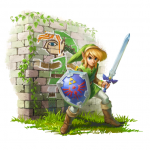
The Legend of Zelda: A Link Between Worlds review
The Legend of Zelda series is one of Nintendo’s flagship recurring franchises, showing up every few years to try and break new ground without actually doing so. That’s not to say they’re bad, they’re just different, which for a series with such a flexible playing order is a good thing when it comes to longevity. But as Nintendo kept pushing the boundaries, they kept moving away from tradition, and even though they didn’t leave the series’ roots, they did tug them pretty hard. Recently, Nintendo made a promise to backspace the next Zelda game to be easier to get into from the beginning and maintain that accessibility to the end. With the latest handheld iteration, A Link Between Worlds, I’m glad to say they pulled it off.
As you might already know, or be able to guess from the title, A Link Between Worlds has a deliberate connection with A Link to the Past, in more ways than one. The most prominent is the overworld, which is very much borrowed from the SNES classic. It’s not identical, but the layout is pretty much the same. Needless to say, if you played the SNES game, you’ll find almost everything familiar. The aesthetic is also similar, with the same bright colors and visual style, and the game plays at a gloriously smooth 60 frames per second, even with the 3D enabled.
Speaking of 3D, personally I’ve only played two 3DS games where enabling 3D really enhanced the experience: Super Mario 3D Land, and A Link Between Worlds. The top-down perspective helps make the game pop-out, as it feels like you’re looking at a maze from above. Going up and falling down levels of dungeons works to the 3D’s favor, and you get a sense of depth seeing Link walk through archways and climb up stairs. Overall, they did a great job with the 3D. In fact, I could play this game comfortably with the 3D all the way up, and I feel like it kind of trained me to be able to play other games with full 3D, but that’s just me.
If you’ve played A Link to the Past, the story could be a little confusing, at least toward the beginning. Like most Zelda games, the basic plot is “save the princess and the land”, but this isn’t a direct sequel to the SNES game (even though the Japanese title is the Japanese title for A Link to the Past with a 2 at the end of it). There’s a legend of a hero that defeated the villainous Ganon, but it’s simply left at that. Many characters reappear, but no one recognizes you as the hero of Hyrule, not even yourself, nor do they recall anything that happened in the (possibly) original game. It leaves the link between “A Links” open to speculation, which is pretty cool.
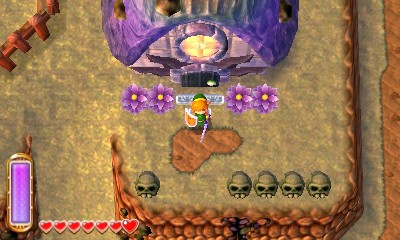 Unlike most Zelda games, Ganondorf is simply part of a legend, but the antagonist is a Ganondorf lookalike named Yuga. In the first act, Yuga goes around Hyrule capturing the descendants of the seven sages in the hopes of channeling Ganondorf’s power. Eventually, you follow him into an alternate land known as Lorule. This is the game’s equivalent of the Dark World from A Link to the Past, with its own distinct, yet similarly bleak style. It turns out Lorule has a princess, too, Princess Hilda, and Yuga is the Ganondorf of Lorule. Unlike Hyrule, there’s no hero to be found, and thus Hilda requires your services to save not just one fantasy land, but two.
Unlike most Zelda games, Ganondorf is simply part of a legend, but the antagonist is a Ganondorf lookalike named Yuga. In the first act, Yuga goes around Hyrule capturing the descendants of the seven sages in the hopes of channeling Ganondorf’s power. Eventually, you follow him into an alternate land known as Lorule. This is the game’s equivalent of the Dark World from A Link to the Past, with its own distinct, yet similarly bleak style. It turns out Lorule has a princess, too, Princess Hilda, and Yuga is the Ganondorf of Lorule. Unlike Hyrule, there’s no hero to be found, and thus Hilda requires your services to save not just one fantasy land, but two.
A Link Between Worlds borrows more than just the landscape from A Link to the Past, as many gameplay elements are present here. Exploration is just as prominent as ever, and even though I’ve been around this block many times before, Hyrule felt just as fresh as the first time I saw it. Many items are carried over from To The Past, such as the hammer, hookshot, and ever-popular bow & arrow and bombs. You’ll also come across familiar artifacts, like the Pegasus Boots, Zora’s Flippers and the Power Glove. But don’t think this is just a remake of an SNES game, it does change things up enough to keep the game unique.
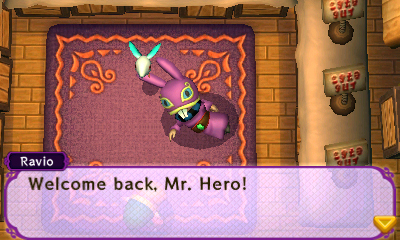 Early on you’ll befriend a traveling merchant, Ravio. He lets you rent the items you would otherwise find in dungeons, eventually allowing you to purchase them. As a trade-off of discovering the item you need to progress, this opens up the game and makes it free-roaming. You can go wherever you want and complete the dungeons in any order you want (kind of like the original NES game, except scaled more evenly). This puts the pacing at your speed, which is always more comfortable than a linear experience, and has been a problem with previous Zelda games. Unfortunately, money is pretty easy to come by in this game, so you’ll end up getting all the items you need fairly early, but the game’s open-endedness makes up for it.
Early on you’ll befriend a traveling merchant, Ravio. He lets you rent the items you would otherwise find in dungeons, eventually allowing you to purchase them. As a trade-off of discovering the item you need to progress, this opens up the game and makes it free-roaming. You can go wherever you want and complete the dungeons in any order you want (kind of like the original NES game, except scaled more evenly). This puts the pacing at your speed, which is always more comfortable than a linear experience, and has been a problem with previous Zelda games. Unfortunately, money is pretty easy to come by in this game, so you’ll end up getting all the items you need fairly early, but the game’s open-endedness makes up for it.
Ravio also gives you a bracelet that acts like the magic meter from other games. In A Link Between Worlds, this magic meter is used for everything, including arrows and bombs. Using such items drains your meter a little, and the meter refills over time. Ravio’s bracelet also has another hidden power, eventually unlocking the most unique mechanic of the game – the ability to transform into a two-dimensional painting on the wall. It may seem gimmicky at first, but it actually lends itself well to some interesting puzzle solving and is a welcome addition to the game. It also allows you to explore Hyrule in a new way, putting a new perspective on trodden ground.
One more new feature is the game’s utilization of Street Pass. You can set up an AI-controlled Shadow Link for other players to fight based on the items you’ve found in your game. So if you’ve built up Link with good armor, plenty of hearts and some good weapons, then a high rupee reward is placed, whereas if you’ve just started your adventure then there will be a low rupee reward since that Shadow Link will be easier to defeat. Because I live in the middle of Backwash Nowhere, USA, I have yet to take advantage of this feature.
Other than that, it’s just what you expect from a Zelda game, and that’s probably the best part. They don’t overdo it with tutorials, letting you figure out much of the game by just playing it. There are towns with people to talk to, minigames to play and make money from, hidden caves to bomb open, upgrades for your items and gear, and heart pieces to collect. There are even small squid-like creatures called Maiamais hidden all throughout Hyrule for you to collect, similar to Skultulas in Ocarina of Time. What you get with A Link Between Worlds is the best of both Zeldas, with the new things being featured but not overshadowing the more traditional elements.
A Link Between Worlds was one of the most captivating games I played in 2013, keeping me hooked for a solid 22 hours, although if you’re one of those people who breezes through everything you can probably expect at least a dozen or so hours on your first playthrough. If you’re expecting a major breakthrough in game design, or an especially challenging game, you might need to look elsewhere. But when you get down to it, what you have with A Link Between Worlds is a Zelda game at its finest and purest. It’s a fantastic action/adventure game that, as far as I’m concerned, should be a part of every 3DS or 2DS owner’s collection.
5 out of 5
Categories: Reviews
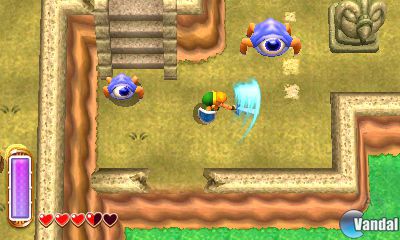
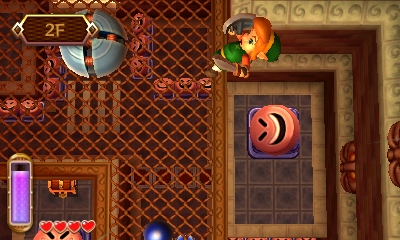
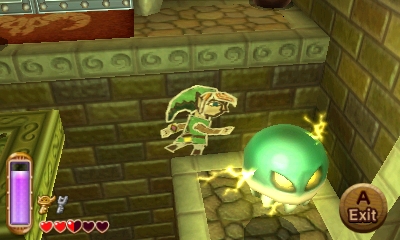
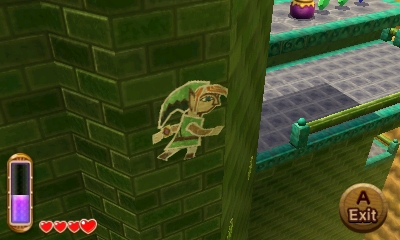
0 Comments
This post has been left all alone with no comments. Don't leave it lonesome - give it some company with a comment.